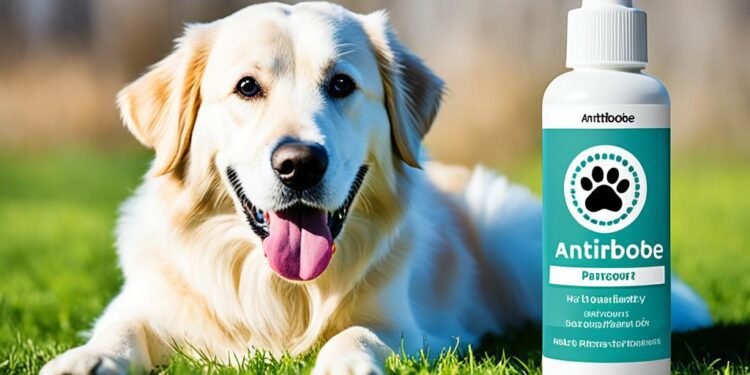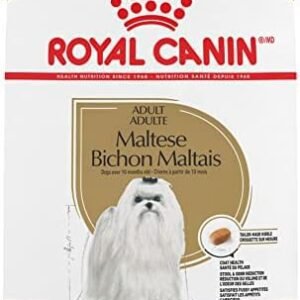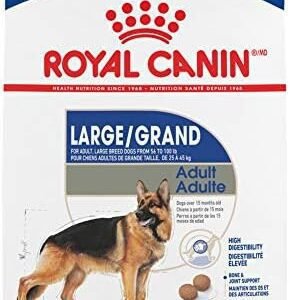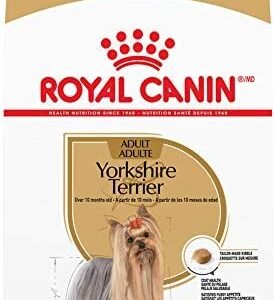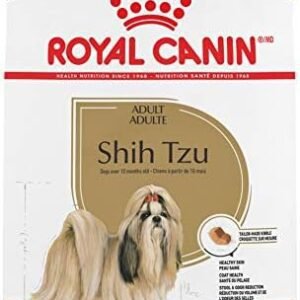Did you know that serum levels of clindamycin in dogs can stay above 0.5 µg/mL with oral dosing at 2.5 mg/lb every 12 hours? This data highlights the critical nature of precise dosing with Antirobe. It’s a top choice among vets for treating various bacterial infections in dogs. Knowing how much Antirobe to give, what side effects might occur, and how to administer it properly is key. These factors ensure your dog stays healthy and safe while on medication.
This article aims to provide essential details about Antirobe’s dosage, how it works, and safety tips for its use. By the close, you’ll be well-informed to oversee your dog’s treatment with care and responsibility.
Key Takeaways
- Antirobe is an effective treatment for bacterial infections in dogs.
- The usual dosage range is 2.5-15.0 mg/lb every 12 hours, depending on the condition.
- Monitoring your dog’s response to treatment is crucial for effective management.
- Consult your veterinarian before starting any medication, including Antirobe.
- Be aware of potential side effects such as vomiting and diarrhea.
Table of Contents
Introduction to Antirobe for Dogs
Antirobe is a key veterinary antibiotic for dogs, treating bacterial infections effectively. With Clindamycin as its active component, it’s crucial for skin conditions, wounds, and oral diseases. The growing demand for dependable treatments underscores Antirobe’s importance for dog owners.
The choice of the best antibiotic for dogs often depends on the infection’s nature. Many veterinarians prefer Antirobe for its effectiveness against anaerobic bacteria and tissue penetration ability. It’s a leading option for treating bacterial infections in dogs, known for its efficacy and safety.
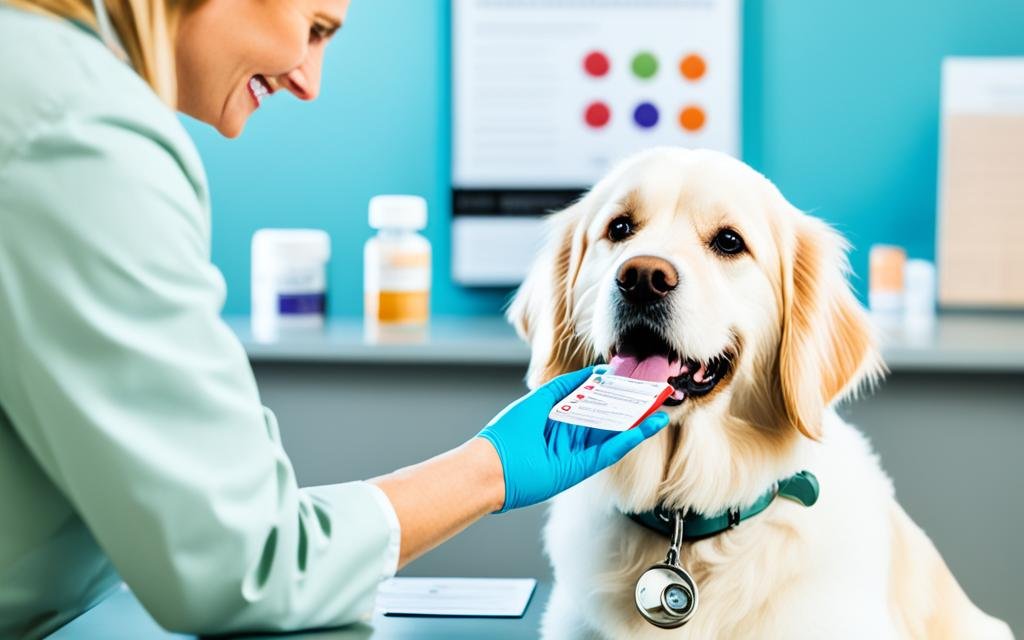
Storing Antirobe correctly is vital. It should stay in temperatures under 25°C, away from moisture and light. This care keeps the medication potent for your dog’s treatment, offering assurance during its use.
To conclude, the role of Antirobe in veterinary care is paramount. It stands as a trusted solution for treating bacterial infections in dogs. Ensuring its proper use through vet consultations guarantees your dog’s wellbeing during treatment.
What is Antirobe?
Antirobe is known as clindamycin hydrochloride. It’s a partially man-made lincosamide antibiotic used in veterinary practices. This veterinarian recommended antibacterial medication effectively combats a wide range of bacteria. It benefits both dogs and cats with infections. Available as capsules or an oral solution, Antirobe is designed for easy use.
The capsules are offered in dosages of 25 mg, 75 mg, and 150 mg. The ANTIROBE AQUADROPS oral solution provides 25 mg of clindamycin per milliliter. For treatment, the typical dose is 2.5 mg per pound of body weight every 12 hours. This regimen maintains clindamycin levels in dogs above 0.5 µg/mL and has an elimination half-life of about five hours.
Clindamycin passes through the body unchanged via urine and feces. Research indicates that healthy dogs don’t show bioactivity buildup even after numerous oral doses. Antirobe is chosen for treating skin and dental infections, along with osteomyelitis. But, pets may experience side effects such as vomiting and diarrhea. Thus, it’s critical to observe how your dog reacts to this treatment.
Antirobe’s importance in veterinary medicine cannot be overstressed because of its broad-spectrum efficacy. Keeping your vet updated on all your pet’s medications is essential. This precaution helps prevent potential adverse drug interactions.
| Form | Strengths | Administration | Common Uses |
|---|---|---|---|
| Capsules | 25 mg, 75 mg, 150 mg | 2.5 mg/lb every 12 hours | Skin and dental infections, osteomyelitis |
| AQUADROPS Oral Solution | 25 mg/mL | Varies depending on body weight | Skin infections in cats, dental infections |
Understanding Clindamycin: The Active Ingredient
Clindamycin acts as the powerful force behind Antirobe, tackling various bacterial infections head-on. Grasping how clindamycin works unveils its role against harmful pathogens. This knowledge is paramount, especially when contemplating the use of clindamycin for dogs.
Mechanism of Action
Its mechanism involves targeting the 50S ribosomal subunit of bacteria. By doing so, clindamycin stops bacteria from growing and multiplying. As a result, it’s known as a bacteriostatic agent. This mode of action is highly beneficial in the treatment of canine infections.
Microbiology and Effectiveness
Renowned for its prowess against a select group of bacteria, clindamycin shines in fighting infections from anaerobic organisms. It’s pivotal for handling skin and dental issues. Its adeptness at neutralizing anaerobic bacteria underscores its value in veterinary medicine.
Uses of Antirobe for Dogs
Antirobe is a crucial antibiotic for combating bacterial infections in dogs. It combats a variety of infections from susceptible bacteria. Knowing when and how to deploy Antirobe aids significantly in enhancing your pet’s health.
Treating Bacterial Infections
Antirobe is primarily used for managing bacterial infections in dogs, tackling problems like:
- Skin infections
- Dental abscesses
- Bone infections
This drug attacks bacteria such as Staphylococcus spp. and Bacteroides fragilis. These bacteria are behind many common infections. Fast and appropriate administration of Antirobe is key to successful treatment.
Common Conditions Treated
Antirobe treats several conditions often seen by veterinarians in dogs. Notable ones include:
| Condition | Description |
|---|---|
| Skin Infections | These are infections of the skin’s superficial layers, leading to irritation, redness, and discomfort. |
| Dental Abscesses | These infections happen around teeth roots, causing pain and swelling, and can spread to nearby tissues. |
| Osteomyelitis | This condition involves bone infections that arise from bacterial invasion, often post trauma or surgery. |
Accurate diagnosis and treatment with Antirobe can speed up recovery. It also improves life quality for dogs suffering from these ailments.
Antirobe for Dogs – Dosage Guidelines
Correctly dosing antirobe in dogs is vital for its success. This antibiotic, with clindamycin, demands accurate dosing. Precise measures are essential to maintain proper drug levels while reducing side effects. Guidelines for capsules and liquid forms are outlined below.
Oral Dosage for Capsules
The capsule dosage depends on the dog’s weight. Follow these guidelines:
| Weight | Dosage |
|---|---|
| 10 lbs | 1-6 capsules of 25 mg every 12 hours |
| 30 lbs | 1-6 capsules of 75 mg every 12 hours |
| 60 lbs | 1-6 capsules of 150 mg every 12 hours |
Liquid Suspension Dosage
The dosage for antirobe liquid is specific:
- Give 1-6 mL per 10 lbs. twice daily. Adjust according to the dog’s weight and the illness’s severity.
Dosage Frequency and Duration
Typically, treatments span from 3 to 28 days. It depends on the infection and how the dog reacts to the medication. Adjusting the dosage based on regular assessments is crucial.
Missed Dose Guidelines
If a dose is missed, administer it promptly. However, if it’s nearly time for the next dose, skip the missed one. Return to the usual schedule. It’s critical to keep clindamycin levels consistent for efficacy.
Potential Side Effects of Antirobe
The use of Antirobe in dogs requires a careful look at its side effects. Although the medication is generally well-tolerated, adverse reactions can occur in some cases. Recognizing both common and serious side effects is vital for proper monitoring. This ensures the health and safety of the canine during treatment.
Common Side Effects
Antirobe’s most common side effects are:
- Vomiting
- Diarrhea
These symptoms are usually mild and tend to improve as the body adjusts to the medication. Careful observation of the dog is necessary. This helps to prevent these side effects from worsening over time.
Serious Adverse Reactions
In rare instances, antirobe can lead to severe adverse reactions. This includes allergic reactions and serious gastrointestinal issues, which require urgent care. It’s critical to monitor for any abnormal signs. This is especially true for dog breeds with known sensitivities.
Precautions for Pregnant and Lactating Dogs
For pregnant canines, antirobe demands precaution. Its safety for pregnant or nursing dogs hasn’t been conclusively determined. Seeking a vet’s advice is essential prior to treatment. This measure protects both the mother and her offspring.
Administering Antirobe to Dogs
It’s crucial to administer Antirobe properly for it to be effective and for your dog’s welfare. This drug can be given orally, in capsule or liquid form. Making sure your dog fully consumes the dosage is key. This prevents potential issues like esophageal irritation.
Methods of Administration
Consider these methods when giving Antirobe:
- Capsules: Provide them with a bit of water to help with swallowing.
- Liquid Suspension: Opt for this if your dog struggles with pills. Always measure the liquid to ensure the correct dose.
Tips for Proper Dosage
To ensure the treatment works, follow these dosage guidelines:
- Adhere strictly to the dosage your vet prescribes, taking your dog’s weight and condition into account.
- Watch out for signs of adverse reactions like diarrhea or changes in urination patterns.
- If you miss a dose, administer it as soon as you remember unless it’s almost time for the next dose. Do not give a double dose.
- Consult your vet before mixing Antirobe with other medicines.
- Keep up with regular vet visits to monitor your dog’s health, especially for long-term Antirobe use.
Following these methods and tips for dosing will ensure your dog benefits from their Antirobe treatment.
Comparative Analysis: Antirobe vs Other Antibiotics
When assessing Antirobe, its effectiveness against other antibiotics is crucial. It shines in treating anaerobic infections, making it the go-to for certain bacteria. This comparative analysis with antibiotics delves into Antirobe’s strengths and limitations. It does so by examining its performance in various dog infections.
Efficacy Comparison
Antirobe showcases superior efficacy in curbing bacterial growth. Studies show Clindamycin significantly diminishes bacterial levels after treatment. Initially, around 85% of samples exhibit bacterial growth. By the fifteenth day, this number falls to 65%. Meanwhile, a mix of metronidazole and espiramycin diminishes in effectiveness over time. This finding underscores Antirobe’s upper hand in certain scenarios.
Cost Analysis
The price of Antirobe matters greatly to dog owners. Generally, its cost aligns with that of other antibiotics. This pricing makes Antirobe an appealing option for numerous pet care scenarios. Such cost differences are pivotal, especially for treatments extending over a period.
Side Effects Comparison
Antirobe shares common antibiotic side effects, but some dogs may face heightened gastrointestinal issues. Recognizing this risk is vital for pet owners, as reactions vary widely. Addressing side effects effectively is key to a dog’s well-being during treatment.
| Antibiotic | Efficacy at Day 15 | Side Effects | Average Cost |
|---|---|---|---|
| Antirobe (Clindamycin) | 65% with bacterial growth | Gastrointestinal distress | $40 – $60 |
| Metronidazole + Espiramycin | 0% with bacterial growth | Less severe | $30 – $50 |
Where to Buy Antirobe for Dogs
When searching for antirobe for dogs, it’s crucial to explore different sources. Pet owners can access this medication through veterinary clinics or online pharmacies. Each source offers unique benefits and variation in pricing.
Veterinary Clinics
Veterinary clinics are often the go-to for purchasing antirobe. Pet owners receive professional advice and prescribed dosages here. The costs at these clinics may be higher due to consultation fees. However, this provides value through expert guidance during the treatment.
Online Pharmacies
Online pharmacies present a convenient and cost-effective alternative for buying antirobe. A prescription from a vet is usually required. These platforms may offer discounts or free shipping, making them an attractive option. Autoship services available online further reduce the cost over time.
Pricing Variations
It’s important for pet owners to understand the pricing differences. The table below outlines approximate costs from various sources:
| Source | Estimated Price | Notes |
|---|---|---|
| Veterinary Clinics | $50-$80 | Includes consultation fee |
| Online Pharmacies | $30-$60 | Discounts available with prescriptions |
| Autoship Options | Save 5% on recurring orders | Free shipping on orders over $49 |
Best Practices for Using Antirobe Safely
Using Antirobe effectively demands adherence to key practices. It ensures your dog’s wellbeing and correct usage of the medication. Always place your dog’s health and safety first during treatment.
Consulting Your Veterinarian
Always consult a vet before using Antirobe. This step confirms if it’s the right choice for your dog. Your vet provides specific safety instructions, including the right dosage. Things like your dog’s weight and health condition are considered. Regular follow-ups are crucial for tracking responses and side effects, ensuring the treatment is on track.
Monitoring Your Dog’s Health
Watch your dog closely after starting Antirobe. Note any signs of discomfort or serious reactions. Pay attention to changes in behavior, eating patterns, or GI health. These might indicate common side effects like vomiting or diarrhea. This diligent monitoring helps in assessing the treatment’s effectiveness. Contact your vet immediately if severe symptoms arise, to possibly revise the treatment plan.
Understanding Antirobe’s Mode of Action
Antirobe targets a range of bacterial infections effectively. It’s known for treating abscesses and dental issues in dogs. Its mechanism involves inhibiting bacterial protein synthesis, crucial for their growth. This stops bacteria from growing and replicating.
How Antirobe Works Against Bacteria
The drug uses clindamycin to attack the bacteria’s ribosomes. It blocks the production of proteins essential for bacterial survival. This leads to a significant reduction in bacterial population, eliminating the infection gradually.
Antirobe is proven to be effective across various bacterial infections in clinical settings:
| Infection Type | Recommended Dosage | Duration |
|---|---|---|
| Infected Wounds & Abscesses | 5.0-15.0 mg/lb every 12 hours | Up to 28 days |
| Dental Infections | 5.0-15.0 mg/lb every 12 hours | Up to 28 days |
| Osteomyelitis | 5.0-15.0 mg/lb every 12 hours | Minimum 28 days |
| Dental Infections in Cats | 5.0-15.0 mg/lb once every 24 hours | Maximum of 14 days |
Antirobe’s efficiency leads to quick therapeutic results, often seen in 1 to 2 hours after taking it. Though full recovery may take days, many owners report their pets show noticeable improvements swiftly.
Long-term Use of Antirobe: Considerations
The long-term use of Antirobe in dogs demands thorough oversight and regular evaluations. Keeping pets healthy on prolonged antibiotic therapy is crucial. Owners must prioritize regular vet visits. Monitoring Antirobe throughout treatment ensures the wellbeing of their pets.
Monthly Monitoring by a Veterinarian
For dogs on Antirobe for more than 28 days, monthly vet checks are critical. This is to spot any adverse effects early. The vet will evaluate the dog’s health, including checking vital signs. Tests for liver and kidney function may also be conducted. Such regular assessments are key to catching gastrointestinal issues or superinfections early.
Signs of Overuse
It’s vital for owners to recognize the symptoms of Antirobe overuse:
- Vomiting
- Diarrhea
- Lethargy or unusual tiredness
- Loss of appetite
- Drooling
- Bloody diarrhea
Seeing any of these symptoms necessitates an immediate vet visit. The treatment plan might need adjustments to mitigate adverse reactions from long-term Antirobe usage.
| Sign of Overuse | Description |
|---|---|
| Vomiting | Frequent expulsion of stomach contents. |
| Diarrhea | Loose or watery stools indicating digestive upset. |
| Lethargy | Unusual weakness or lack of energy. |
| Loss of Appetite | Decreased interest in food. |
| Drooling | Excess saliva production, sometimes a sign of nausea. |
| Bloody Diarrhea | Presence of blood in the stool indicates a serious condition. |
Conclusion
Antirobe emerges as an indispensable ally in fighting bacterial infections in dogs. By following Antirobe’s safety guidelines, pet owners can optimize their dog’s recovery. This approach significantly reduces potential side effects. It’s crucial to consult a veterinarian for tailored advice, addressing any concerns or symptoms that may arise.
Understanding the correct dosage and administration is critical for the well-being of dogs. The right dosage, between 5.0 to 10.0 mg/lb of body weight given daily, is key for effective treatment. This adherence to guidelines not only supports recovery but also ensures a healthier future for our dogs.
Ultimately, knowledge about Antirobe and a commitment to precautionary measures empower us in our canine companions’ healthcare journey. Following your vet’s advice and staying well-informed on antirobe guidelines lead to more successful health outcomes for dogs in treatment.

















